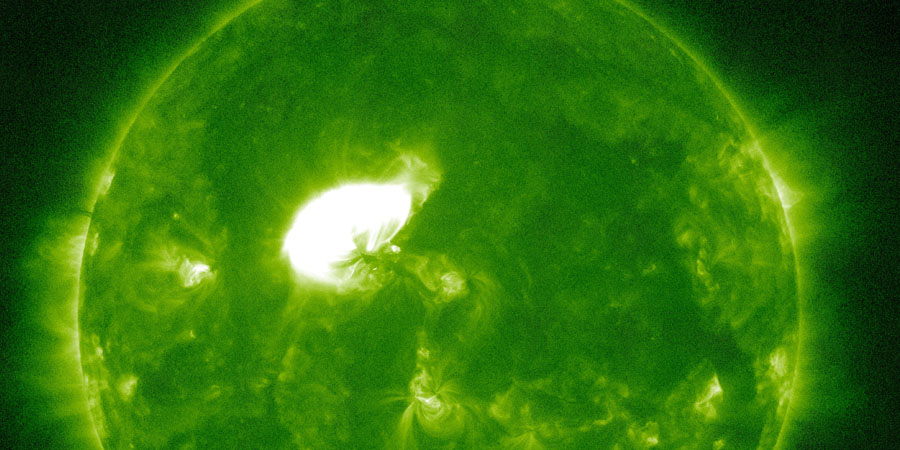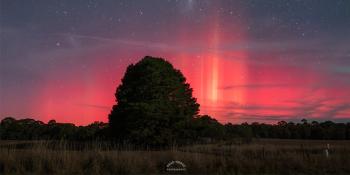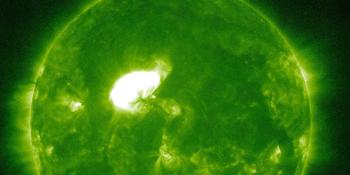M8.2 solar flare, Strong G4 geomagnetic storm watch
Saturday, 31 May 2025 18:11 UTC

Wow! Major solar fireworks today. Charge your camera batteries and put on your finest jacket for tomorrow night as strong (G3) or perhaps even severe (G4) geomagnetic storm conditions are possible tomorrow evening (1 June) into 2 June. The center of attention today was sunspot region 4100 which produced a gorgeous long duration M8.2 solar flare today (R2-moderate) peaking at 00:05 UTC. This region is close to the center of the Earth-facing solar disk and launched a major asymmetrical full halo (as seen by SOHO/LASCO) coronal mass ejection in space with a pretty much guaranteed earth-directed component.
Sunspot region 4100 produced a gorgeous long duration M8.2 solar flare today peaking at 00:05 UTC. This region is close to the center of the Earth-facing solar disk and the eruption is associated with a Type II radio emission. This along with the most recent coronagraph imagery… pic.twitter.com/kYZWAhFI3f
— SpaceWeatherLive (@_SpaceWeather_) May 31, 2025

As you can see the coronal mass ejection is very impressive and while it isn't a picture perfect symmetrical full halo (bulk heading slightly to the north), there is no doubt that this is a great eruption which will impact our planet. Below we have two model runs and they are in agreement that the coronal mass ejection is fast and could arrive tomorrow afternoon likely anywhere between 12 UTC and 18 UTC. This would be perfect for Europe but even north America, Australia and New Zealand should be on alert as enhanced geomagnetic (storm) conditions will likely persist for 24 hours or more after the plasma cloud impacts our planet. Middle latitude locations like England, Germany and central US states like Colorado, Kentucky, Illinois and Missouri) should be on high alert tomorrow as geomagnetic storm conditions between the strong G3 and severe G4 (Kp8) level are expected which could make aurora visible from such locations. Happy hunting and follow the data live on this website!


Thank you for reading this article! Did you have any trouble with the technical terms used in this article? Our help section is the place to be where you can find in-depth articles, a FAQ and a list with common abbreviations. Still puzzled? Just post on our forum where we will help you the best we can!
Latest news
Latest forum messages
Support SpaceWeatherLive.com!
A lot of people come to SpaceWeatherLive to follow the Solar activity or if there is a chance to see the aurora, but with more traffic comes higher costs to keep the servers online. If you like SpaceWeatherLive and want to support the project you can choose a subscription for an ad-free site or consider a donation. With your help we can keep SpaceWeatherLive online!
Space weather facts
| Last X-flare | 2025/06/19 | X1.9 |
| Last M-flare | 2025/08/12 | M1.8 |
| Last geomagnetic storm | 2025/08/09 | Kp6 (G2) |
| Spotless days | |
|---|---|
| Last spotless day | 2022/06/08 |
| Monthly mean Sunspot Number | |
|---|---|
| July 2025 | 125.6 +9.3 |
| August 2025 | 142.4 +16.8 |
| Last 30 days | 138.7 +31.9 |





